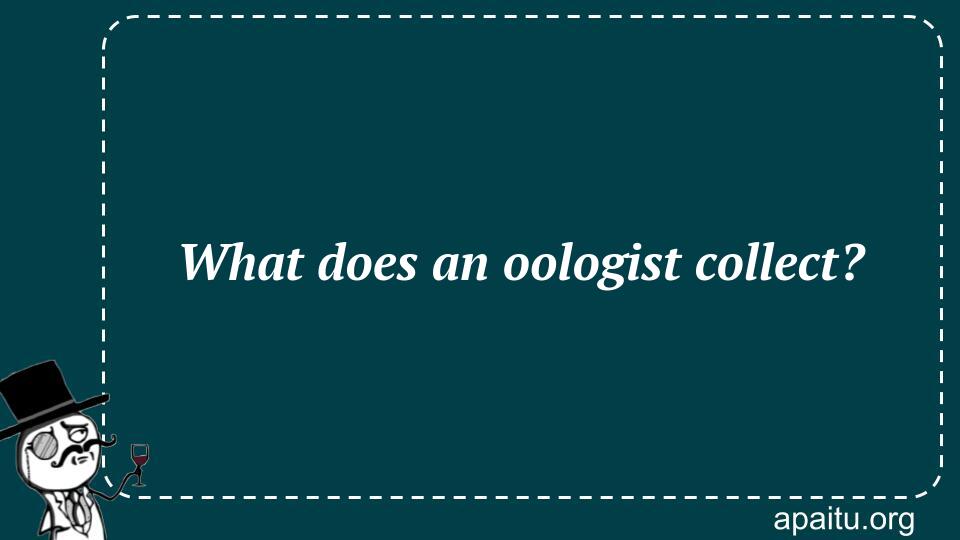Question
Here is the question : WHAT DOES AN OOLOGIST COLLECT?
Option
Here is the option for the question :
- Clocks
- China dolls
- Thimbles
- Eggs
The Answer:
And, the answer for the the question is :
Explanation:
Oologists are those who study and collect bird eggs. The Oxford English Dictionary states that the 1830s marked the beginning of the word’s use. Birds’ eggs became a favorite choice for Victorian collectors, and several exquisitely designed volumes featuring bird eggs were made. Egg harvesting has been illegal in several nations in recent years due to the threat it posed to endangered bird species. The Natural History Museum in London, United Kingdom, and the Delaware Museum of Natural History, United States, both house some of the greatest historic oology collections in the world.

Oology, the study of eggs, has fascinated scientists, collectors, and nature enthusiasts for centuries. An oologist is an individual who collects and studies eggs, delving into their intricate features, diversity, and evolutionary significance. In this article, we will explore the world of oology, the objects of an oologist’s passion—the eggs—and the insights they provide into the natural world.
Eggs, as reproductive structures, are marvels of nature. They serve as protective capsules that nurture and shelter developing embryos until they are ready to hatch. Oologists recognize the beauty and scientific value of eggs, and they engage in the collection, study, and preservation of these delicate treasures.
The practice of collecting eggs, often referred to as egg collecting or egging, has a long history that can be traced back to the 17th century. Early collectors amassed vast collections, driven by a passion for natural history and a desire to understand the diversity and adaptations of different species. These collections became valuable resources for scientific study and helped advance our knowledge of avian biology.
Egg collectors employ various methods to obtain specimens. Some collect abandoned or discarded eggs found in the wild, while others obtain eggs from breeding facilities or through ethical means such as working with researchers and conservationists. It is important to note that egg collecting regulations and ethical guidelines have been established to protect wildlife and ensure the preservation of species.
Oologists meticulously catalog and study their collections, paying close attention to the eggs’ physical characteristics, such as size, shape, coloration, and markings. These features provide valuable insights into the reproductive strategies, habitat preferences, and evolutionary adaptations of different bird species. By comparing eggs from different populations or closely related species, oologists can uncover patterns and variations, shedding light on the intricate relationships between birds and their environment.
Egg collections also serve as valuable records of biodiversity and can provide information about changes in bird populations over time. Historical egg collections offer a window into the past, allowing researchers to compare current data with specimens collected decades or even centuries ago. These comparisons help track shifts in species distribution, population sizes, and breeding behavior, contributing to our understanding of ecological dynamics and the impact of human activities on wildlife.
While the practice of egg collecting has faced criticism due to potential negative impacts on bird populations, oologists today prioritize ethical and responsible collecting practices. Many collectors focus on preserving and documenting existing collections rather than actively seeking new specimens. In fact, some collectors have transitioned into roles as custodians and curators, ensuring that thes